Jørgen Veisdal in Privatdozent:
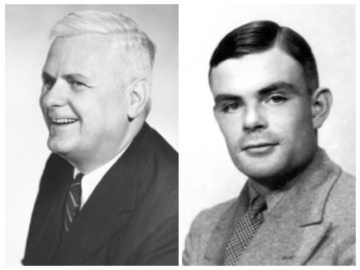 As Soare (2013) recounts, John von Neumann (1903–1957) happened to be in the audience as a representative of Hilbert’s program when Gödel, then 25 years old, took the podium to present his result. von Neumann immediately recognized that Hilbert’s program was over, and spent the next weeks preparing the proof of a related theorem. He had in mind an arithmetization of Gödel’s incompleteness result, to show that not only are formal systems incapable of proving every statement in them, they are also unable to guarantee proofs of their own consistency. He later presented his proof to Gödel, writing “using the methods you employed so successfully […] I achieved a result that seems to me to be remarkable, namely, I was able to to show that the consistency of mathematics is unprovable” (Dyson, 2005). Writing back, Gödel reportedly politely thanked the great man and informed him that he himself (Gödel) had written the same proof weeks earlier, and that it had already been submitted for publication.
As Soare (2013) recounts, John von Neumann (1903–1957) happened to be in the audience as a representative of Hilbert’s program when Gödel, then 25 years old, took the podium to present his result. von Neumann immediately recognized that Hilbert’s program was over, and spent the next weeks preparing the proof of a related theorem. He had in mind an arithmetization of Gödel’s incompleteness result, to show that not only are formal systems incapable of proving every statement in them, they are also unable to guarantee proofs of their own consistency. He later presented his proof to Gödel, writing “using the methods you employed so successfully […] I achieved a result that seems to me to be remarkable, namely, I was able to to show that the consistency of mathematics is unprovable” (Dyson, 2005). Writing back, Gödel reportedly politely thanked the great man and informed him that he himself (Gödel) had written the same proof weeks earlier, and that it had already been submitted for publication.
More here.

 In the wreckage of World War I, it was hard to imagine a return to this borderless “economic Eldorado.” But today, it’s the relatively self-contained national economies of the mid-twentieth century that may seem like a lost world. To access the products of the whole earth, you don’t even have to pick up the phone; you can just log onto Amazon.
In the wreckage of World War I, it was hard to imagine a return to this borderless “economic Eldorado.” But today, it’s the relatively self-contained national economies of the mid-twentieth century that may seem like a lost world. To access the products of the whole earth, you don’t even have to pick up the phone; you can just log onto Amazon.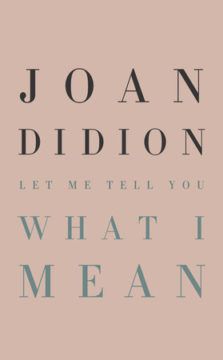 Naturally, there is something contradictory to be found in the emphasis on the “I” in Didion’s work and the supposed “sublime neutrality” which she represents. Considering the omnipresence of the former, the latter seems more or less unattainable. For many Didion readers, who simply cannot shake free of the need to label no matter how hard they wriggle, this paradox might seem unimportant. For me, it is the crux of her work, highlighted in her new collection of essays, Let Me Tell You What I Mean. Encapsulating many pieces from Didion’s emergence with her ‘Points West’ column which she shared with her husband, John Gregory Dunne, as well as later work for establishments like the New York Times Magazine and New Yorker, the collection is a continuation of Didion’s lifelong search for that meagre, almost incommunicable slice of the world where subjectivity and transparency live together hand in hand.
Naturally, there is something contradictory to be found in the emphasis on the “I” in Didion’s work and the supposed “sublime neutrality” which she represents. Considering the omnipresence of the former, the latter seems more or less unattainable. For many Didion readers, who simply cannot shake free of the need to label no matter how hard they wriggle, this paradox might seem unimportant. For me, it is the crux of her work, highlighted in her new collection of essays, Let Me Tell You What I Mean. Encapsulating many pieces from Didion’s emergence with her ‘Points West’ column which she shared with her husband, John Gregory Dunne, as well as later work for establishments like the New York Times Magazine and New Yorker, the collection is a continuation of Didion’s lifelong search for that meagre, almost incommunicable slice of the world where subjectivity and transparency live together hand in hand.
 As his armies conquered most of Europe, Napoleon Bonaparte demonstrated an insatiable desire to steal art. These were not smash-and-grab operations. According to Cynthia Saltzman’s marvelous book, “Plunder: Napoleon’s Theft of Veronese’s Feast,” he sought out experts to advise him on which cultural treasures to ship back to Paris. Napoleon wanted to expand the art collection in the Louvre palace. He wrote to France’s five-member governing committee to “send three or four known artists” to choose the best paintings and sculptures.
As his armies conquered most of Europe, Napoleon Bonaparte demonstrated an insatiable desire to steal art. These were not smash-and-grab operations. According to Cynthia Saltzman’s marvelous book, “Plunder: Napoleon’s Theft of Veronese’s Feast,” he sought out experts to advise him on which cultural treasures to ship back to Paris. Napoleon wanted to expand the art collection in the Louvre palace. He wrote to France’s five-member governing committee to “send three or four known artists” to choose the best paintings and sculptures. S
S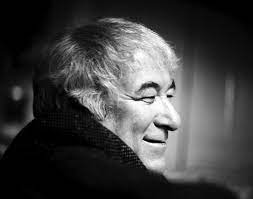 Neruda’s declaration that “the reality of the world … should not be underprized” implies that we can and often do underprize it. We grow away from our primary relish of the phenomena. The rooms where we come to consciousness, the cupboards we open as toddlers, the shelves we climb up to, the boxes and albums we explore in reserved places in the house, the spots we discover for ourselves in those first solitudes out of doors, the haunts of those explorations at the verge of our security—in such places and at such moments “the reality of the world” first wakens in us. It is also at such moments that we have our first inkling of pastness and find our physical surroundings invested with a wider and deeper dimension than we can, just then, account for.
Neruda’s declaration that “the reality of the world … should not be underprized” implies that we can and often do underprize it. We grow away from our primary relish of the phenomena. The rooms where we come to consciousness, the cupboards we open as toddlers, the shelves we climb up to, the boxes and albums we explore in reserved places in the house, the spots we discover for ourselves in those first solitudes out of doors, the haunts of those explorations at the verge of our security—in such places and at such moments “the reality of the world” first wakens in us. It is also at such moments that we have our first inkling of pastness and find our physical surroundings invested with a wider and deeper dimension than we can, just then, account for.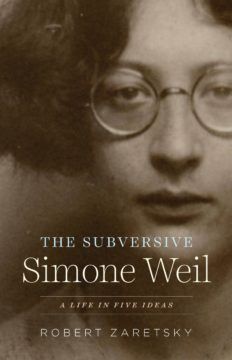 Simone Weil was difficult for those who knew her in life and no less difficult for those who encounter her now, through the writings that survived her death at the age of 34 in 1943. Robert Zaretsky’s new intellectual biography, The Subversive Simone Weil: A Life in Five Ideas (2021), evokes several difficulties in its epilogue. Weil’s character was “extreme.” Her ideas were largely impractical (“at worst inhuman”). He calls her attitude “merciless.” And yet, “I cannot resist returning time and again to this remarkable individual,” Zaretsky writes. She led an “exemplary” life. “For many of her readers,” he suggests, “Weil’s life has all the trappings of secular sainthood.”
Simone Weil was difficult for those who knew her in life and no less difficult for those who encounter her now, through the writings that survived her death at the age of 34 in 1943. Robert Zaretsky’s new intellectual biography, The Subversive Simone Weil: A Life in Five Ideas (2021), evokes several difficulties in its epilogue. Weil’s character was “extreme.” Her ideas were largely impractical (“at worst inhuman”). He calls her attitude “merciless.” And yet, “I cannot resist returning time and again to this remarkable individual,” Zaretsky writes. She led an “exemplary” life. “For many of her readers,” he suggests, “Weil’s life has all the trappings of secular sainthood.”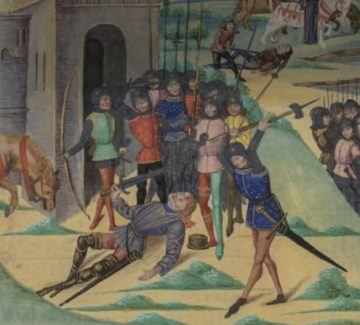 Neo-Malthusians credited environmental feedback loops, not moral failings, for regime collapse. In the 1960s and ’70s, works by Paul Ehrlich and Donella Meadows et al argued that the world’s population was growing so fast it would soon outstrip resource supplies, leading to (among other things) widespread food shortages. More recently, Jared Diamond wrote of the role that environmental depletion and diseases played in the fall of civilisations, and his theory that the collapse of Easter Island resulted from overexploitation of the natural environment has enjoyed particular resonance. For its part, the
Neo-Malthusians credited environmental feedback loops, not moral failings, for regime collapse. In the 1960s and ’70s, works by Paul Ehrlich and Donella Meadows et al argued that the world’s population was growing so fast it would soon outstrip resource supplies, leading to (among other things) widespread food shortages. More recently, Jared Diamond wrote of the role that environmental depletion and diseases played in the fall of civilisations, and his theory that the collapse of Easter Island resulted from overexploitation of the natural environment has enjoyed particular resonance. For its part, the  Practically every animal that scientists have studied — insects and cephalopods, amphibians and reptiles, birds and mammals — can distinguish between different numbers of objects in a set or sounds in a sequence. They don’t just have a sense of “greater than” or “less than,” but an approximate sense of quantity: that two is distinct from three, that 15 is distinct from 20. This mental representation of set size, called numerosity, seems to be “a general ability,” and an ancient one, said
Practically every animal that scientists have studied — insects and cephalopods, amphibians and reptiles, birds and mammals — can distinguish between different numbers of objects in a set or sounds in a sequence. They don’t just have a sense of “greater than” or “less than,” but an approximate sense of quantity: that two is distinct from three, that 15 is distinct from 20. This mental representation of set size, called numerosity, seems to be “a general ability,” and an ancient one, said  Reviewing all of the region’s military interventions between 2010 and 2020, our research
Reviewing all of the region’s military interventions between 2010 and 2020, our research  For decades, scientists suspected that bacteria known as Geobacter could clean up radioactive uranium waste, but it wasn’t clear how the microbes did it.
For decades, scientists suspected that bacteria known as Geobacter could clean up radioactive uranium waste, but it wasn’t clear how the microbes did it. Our main goal is to begin deciphering the molecular communication between bacteria (and the small molecules they secrete) and host cells in the small intestine. We’re particularly interested in enteroendocrine cells — cells found in the lining of the small intestine and throughout the intestinal tract — and how the small-intestine microbiome prompts them to release hormones. We also want to explore how this communication allows gut bacteria to alter physiology throughout the body. We know that gut bacteria affect biological processes in distal places such as the brain and skeletal muscles. I believe that bacterial communication with enteroendocrine cells is a major mechanism. These cells secrete hormones and neurotransmitters, and they also talk to neurons, sending signals across the body. We know there are physical interactions, where bacteria adhere to host cells. There are also chemical-signaling interactions, where intestinal cells sense and react to small molecules produced by microbes. We don’t yet understand the full context or implications of this molecular language in the small intestine. We hope to begin probing which small molecules the enteroendocrine cells respond to, which bacteria produce these molecules, which receptors they bind to, and how that translates to changes in biological processes. Our hope is to provide valuable novel therapeutic targets, not just for metabolic disorders, but also for neuropsychiatric conditions, and disorders influenced by the microbiome.
Our main goal is to begin deciphering the molecular communication between bacteria (and the small molecules they secrete) and host cells in the small intestine. We’re particularly interested in enteroendocrine cells — cells found in the lining of the small intestine and throughout the intestinal tract — and how the small-intestine microbiome prompts them to release hormones. We also want to explore how this communication allows gut bacteria to alter physiology throughout the body. We know that gut bacteria affect biological processes in distal places such as the brain and skeletal muscles. I believe that bacterial communication with enteroendocrine cells is a major mechanism. These cells secrete hormones and neurotransmitters, and they also talk to neurons, sending signals across the body. We know there are physical interactions, where bacteria adhere to host cells. There are also chemical-signaling interactions, where intestinal cells sense and react to small molecules produced by microbes. We don’t yet understand the full context or implications of this molecular language in the small intestine. We hope to begin probing which small molecules the enteroendocrine cells respond to, which bacteria produce these molecules, which receptors they bind to, and how that translates to changes in biological processes. Our hope is to provide valuable novel therapeutic targets, not just for metabolic disorders, but also for neuropsychiatric conditions, and disorders influenced by the microbiome. I’m not gonna say that Everybody Wants Some!!, the film by Richard Linklater, is a great movie. It is not. But it’s pretty good. We should also just appreciate a film that has not one but two!! exclamation marks in its official title. And yet, something nags at me about the title, that sentence, everybody wants some. What is it that everybody wants? Some. Some what? Well sex, of course, everbody wants some sex. And most of the people in the film are chasing after sex, especially the jocks on the baseball team, our ostensive heroes, the protagonists of the film if there are any protagonists in this film. They want to have as much sex as possible, those baseball jocks, and a few of them get just that. They also want something to do with baseball. They want to become baseball players of a professional sort. They want some fame, some glory, the glory of sport. Probably they want some money also, the money that goes along with the glory and that overlaps to at least some degree with the sex. Sex, glory, and money. That is what they want some of.
I’m not gonna say that Everybody Wants Some!!, the film by Richard Linklater, is a great movie. It is not. But it’s pretty good. We should also just appreciate a film that has not one but two!! exclamation marks in its official title. And yet, something nags at me about the title, that sentence, everybody wants some. What is it that everybody wants? Some. Some what? Well sex, of course, everbody wants some sex. And most of the people in the film are chasing after sex, especially the jocks on the baseball team, our ostensive heroes, the protagonists of the film if there are any protagonists in this film. They want to have as much sex as possible, those baseball jocks, and a few of them get just that. They also want something to do with baseball. They want to become baseball players of a professional sort. They want some fame, some glory, the glory of sport. Probably they want some money also, the money that goes along with the glory and that overlaps to at least some degree with the sex. Sex, glory, and money. That is what they want some of.